FISHING WITH ETIQUETTE

































 By: KATHERINE M. CLEMENTS
By: KATHERINE M. CLEMENTS
There is a groovy little creature that roams the ocean. The psychedelic frogfish stands out from other fish in its unique coloring and because it does not swim. Instead, it uses its pectoral fins to walk along the sea floor and sometimes uses its fins to push off the bottom of the seafloor, “hopping” around.
The psychedelic frogfish skin is embellished with groovy swirls of orange and white. These distinctive stripes make a fingerprint pattern that is unique to each fish and acts as camouflage, helping it hide from predators. Its tiny aquamarine eyes light up brightly from the center of its flattened head, belying the perpetual frown of its mouth.
Many frogfish, otherwise known as anglerfish, are known for destructively devouring their prey, and this far-out species is no different. The frogfish hides in tiny crevices in coral, blocking off passages that shrimp and little fish use to get to inner chambers. Additionally, the frogfish’s thick skin protects him from scratches as he squirms his way into tight spaces and waits for unsuspecting prey to float by, when, in a flash, he swallows

them whole.
Psychedelic frogfish are “egg-brooders,” meaning they keep their eggs attached to their body to protect them from predators. Female psychedelic frogfish lay large clusters of eggs. One was documented to have laid about 220 eggs. The female wraps her caudal, dorsal, and anal fins around the cluster of eggs and carries them until they hatch, using a unique method of aerating the eggs by creating a pouch with its fins and fanning them. It is unknown how long it takes for the eggs to hatch, as is little else about these groovy fish, as they were only first discovered as recently as 1992. However, only a little came of that first observation, and another sighting was made in 2008.
Psychedelic frogfish is one of the rarest and hardest-tofind fishes in the world. It can only be found in one particular location, in the restricted areas of the Ambon and the Molucca islands in Indo-
CA 92659
(APRIL 15-28)
“It has been a special part of my life. I was there the day it sailed into Long Beach. My Father in law sailed on it as a troop ship and was on it when it was hit by a topedo. My best friend’s mother was a war bride and came on the Queen. My wife and I spent the first nite married in The Queens Suite. Im glad that Long Beach is saving the Queen.”
—Alan HolmesRE: Dana Point Harbor Partners Unveil Renderings for Revitalization Project (DEC. 9-22)
“the overstated development doesn’t include how much more green area or false flags of untrue accusation or lack of any new maritime business’s resulting in dominance by existing

businesses or the lessening of slip counts in a time we need more slips or the lack of waiting lists for new tenants when existing tenants waited for decades for their boat slips and will be evicted from them to new local .Or the over charging and increases along with poor lay out and financing for this state capitalize .It has truly become a money grab for the rich to service the rich instead of being broke up into many small micro business’s and opportunities for the many not the few shame on bartlett and county supervisors !”
—George
thomas GregoryRE: Dana Point Harbor Partners Unveil Renderings for Revitalization Project (DEC. 9-22)


“I’m looking but I don’t see any 50 outdoor tables next to Coffee Importers. So ends a 20 year tradition. Progress can be sad.”
—Mark
 By: KATHERINE M. CLEMENTS
By: KATHERINE M. CLEMENTS
Lure fishing is challenging yet exciting because, instead of using bait, the angler navigates the fishing lures to attract the fish. But do you know how far back fishing lures date and how they have changed since their original conception? Let’s look at the history of fishing lures.
Fishing lures weren’t always bright, colorful curiosities. Fishing lures have been around since antiquity and were first made from bone and bronze. The Chinese and Egyptians used fishing rods, hooks, and lines as early as 2,000 B.C.E. The first hooks were made from bronze and were solid and thin. The Chinese were the first to make fishing lines spun from fine silk.
During the mid-19th century, lure fishing took off in a big way. Because of this, fishing lures were manufactured on
a mass scale. The lures were very basic in design, which is why they were so successful. Today, most lures are made to look like dying, injured, or fast-moving fish.
During the 3rd century AD, the ancient Romans were also huge fans of fishing. Roman author and teacher of rhetoric Claudius Aelianus would document his fly fishing experiences in writing. He also wrote about how he would create his own lures and use feathers, lead, bronze, and even horsehair, to help attract the fish.
Michigan beekeeper James Heddon is documented as the originator of the artificial lure known as the plug. Though disputed, lore has Heddon “discovering” the plug as a wooden topwater bait after he carved a sliver of wood into a mill pond near his home and watched a bass strike it. He received a patent for “fish bait” in 1902 for his Dowagiac Casting Bait.

Heddon established James Heddon & Son Co. (later James Heddon’s Sons after Heddon’s death), which grew to become one of the world’s largest manufacturers of artificial lures.

Before big manufacturers started making lures, most fishing lures were made by individual craftsmen. Commercial-made lures were based on the same ideas used by individual craftsmen but on a larger scale. It was sport fishing that encouraged the advancement of artificial baits across Europe as early as the 14th century.
The British brought artificial lures to the United States in the 18th century. However, Native Americans on the West Coast “caught fish with an artificial fly probably long before such were known and used in England,” according to the book Recreation by George O. Shields.
It was not until the 1980s that Allan Cole invented the AC Plug, a wooden,
jointed lure with a rubber tail that resembled a swimming fish as it moved through the water. It was the beginning of swimbait, though he didn’t go public with it until the early 1990s.
LONG BEACH — On Dec. 12, the City of Long Beach announced it would officially begin welcoming visitors back onboard the Queen Mary as of Dec. 15— the first time the ship has had guests onboard since March 2020. To celebrate the reopening of select elements of the ship and to thank the community for their patience and support during the ship›s closure, the city will be offering free guided tours to the public for a limited time. During the one-hour tour, visitors will be guided by a historical docent to experience select areas of the Queen Mary›s promenade deck and scenic views of the downtown shoreline, including a walk through the promenade shops, observation bar, queen salon, and royal salon, among other areas. In addition, tour participants will learn about the ship’s history – including its haunted history – and will also watch a short video inside Heritage Hall featuring the critical repair work completed throughout 2022. For more information or to reserve a free tour, please visit https:// longbeach.gov/pages/city-news/ queen-mary-reopening-tours/.
LOS ANGELES — Titanic the Exhibition has hit LA, where guests can step aboard an immersive and interactive tour of the Titanic. The exhibit features recreations of the ship’s interior and exterior. Guests can explore the galleries and boiler room, peek inside a millionaire’s suite, stroll the promenade deck and see the grand staircase. Guests will be assigned the name of an actual passenger upon entrance and will discover that individual’s story as told through relics of the past. Hundreds of artifacts from the Titanic and her sister ships reveal the latest details of the Titanic’s sinking and discovery. In addition, guests will see recovered items, authentic White Star Line objects, and even props and costumes from James Cameron’s famous 1997 feature film. Visitors can experience how it felt to discover the sunken remains of the Titanic. Visitors can walk above a sea floor with sand and broken artifacts, see what discovery teams saw during their dives, and do a unique VR experience providing perspective on the ship’s downfall. The one-hour tour costs $33.90 and is open Mon- Thurs. (closed on Tuesdays) from 10 a.m.- 7 p.m. and Fri- Sun from 10 a.m.- 8 p.m. The exhibition is located at Beverly Event Venue, 4327 Beverly Blvd, Los Angeles. To learn more or to purchase tickets, please visit https://bit.ly/3uHMOof.
SAN DIEGO — The Port of San Diego paired 11 students from Perkins K-8
School in Barrio Logan with 11 Port of San Diego Harbor Police officers on Dec. 3 for the annual Shop with a Cop event.
The fun began in the morning with the officers driving the students from Perkins to SeaWorld San Diego, where breakfast was served, then attended a dolphin encounter show and learned about the history of Shop with a Cop. The students also met police officers who were Shop with a Cop participants when they were young students.
Later in the day, the students rode in a police caravan to the Point Loma
Target store, where they received complimentary Target gift cards and enjoyed a shopping spree. After shopping, the children went to the Port’s Cesar Chavez Park in Barrio Logan for recreational fun. The day ended with the Harbor Police hosting a barbecue for the students and their parents.
“Shop with a Cop is a very humbling and rewarding experience,” said Chief Magda Fernandez, Port of San Diego Harbor Police Department, in a press release from Dec. 6. “It gives Harbor Police an opportunity to interact closely
with students within the communities neighboring the Port and a chance for us to give back. I’m proud that Harbor Police and our partner law enforcement agencies were able to provide such a joyous day for these students.”
Shop with a Cop is an annual event sponsored by law enforcement agencies, SeaWorld, Target, and STAR/ PAL, to provide children with a happier holiday season and encourage positive relationships with police. The Escondido
Dear Friends and Colleagues, I’m pleased to announce that I have recently changed brokerage houses and ownership from Crow’s Nest Yachts to IYC (International Yacht Company). This decision will not only expand my presence in the yachting community but also better facilitate the continuing growth of my client’s needs and desires for yachting adventures. The partnership with IYC – an international yachting brand – allows a larger and better footprint to represent my clients in yachting with a highly-renowned company. This move gives me the opportunity to expand into markets that will enhance my clients’ platform and representation across the world.
I chose to partner with IYC for many reasons. Firstly, the company is highly tech-based and efficient, with no fewer than 10 full-time, in-house employees on the technology team. That’s, of course, in addition to their global marketing and business intelligence teams. The company’s reputation is first-class, and they also have several partners and co-affiliations within the luxury community from the private jet segment to private events worldwide.
IYC has a long-standing name and has expanded growth to now include the west coast, offering full yachting services from sales, new construction, retail charter, charter marketing/management, and yacht management. Please reach out to me with any questions. I look forward to continuing to work with you.






Sincerely, Michael

Founded in 1971
NO. 1196 DECEMBER 23- JANUARY 5, 2023

WRITE TO: P.O. Box 1337
Newport Beach, CA 92659 (949) 660-6150 (800)873-7327 Fax (949) 660-6172
QUESTION:
I own a waterfront home on the Sacramento Delta, and my boat and dock have been damaged several times by the wakes from passing boats. I am not sure if the area has a speed limit, but is there some kind of universal speed limit for boats when they are around a dock? On one occasion my boat was damaged at my dock by the wake from a law enforcement boat. Are they subject to the same rules as everyone else? Can I sue them for the damage?
David Weil is the managing attorney at Weil & Associates (www. weilmaritime.com) in Seal Beach. He is certified as a Specialist in Admiralty and Maritime Law by the State Bar of California Board of Legal Specialization and a “Proctor in Admiralty” Member of the Maritime Law Association of the United States, an adjunct professor of Admiralty Law, and former legal counsel to the California Yacht Brokers Association. If you have a maritime law question for Weil, he can be contacted at 562799-5508, through his website at www.weilmaritime.com, or via email at dweil@weilmaritime.com.
 By: KATHERINE M. CLEMENTS
By: KATHERINE M. CLEMENTS
DANA POINT — Holidays in the Dana Point Harbor are for lovers, family, and friends. Dana Wharf Sportfishing and Whale watching offers 60-minute cruises through the Dana Point Harbor for locals and visitors to enjoy the brightly decorated boats throughout the harbor. Then guests can also experience the “Happy Harbor Days” after the cruise. The vibrant light displays are free to enjoy, consist of over 700,000 LED lights, and feature intricate themed light creations, including Candy Cane Lane, the “Merry Kiss Me” arch, lighted trees, and more. To purchase tickets, look for signs for Dana Wharf Sportfishing and the Catalina Express. The office is located next to Jon’s Fish Market. For more information or to purchase tickets, please visit https://danawharf.com/cruises-and-events/ harbor-lights-cruise/. Also, don’t forget to submit your photos to thelogeditor@thelog.com!
ANSWER: Certain sections of any navigable waterway may be governed by a speed limit established by the local community, and those speed limits must be prominently posted on a sign or buoy. Speed limits on California waterways are also established by state law, most notably California Harbors and Navigation Code section 655.2, which sets a five mile-perhour speed limit within certain areas. In this case, our reader may find some relief under section 655.2(2) which restricts the speed of a passing boat to five
Please see ATTORNEY, PAGE 7
EDITORIAL/CREATIVE (949)660-6150
Editor and Publisher Duncan McIntosh, Jr. duncan@goboating.com


General Manager
Kathleen Ford kathleen@goboating.com (949)519-4745
Editor Katherine Clements katherine@goboating.com
Graphic Artist Meredith V. Ewell
Contributors
J.R. Johnson, Bob Vanian, Catherine French, David Weil, Capt. Pat Rains
ADVERTISING SALES (949)660-6150
Fax: (949) 660-6172 Susanne Kirkham-Diaz (949)503-7693 susanne@goboating.com
Daniel Voet (949)503-7679 daniel@goboating.com
CLASSIFIED ADVERTISING (800)887-1615
Jon Sorenson jon@goboating.com
SUBSCRIPTION SERVICES (800)887-1615 jon@goboating.com
“My sweet boxer mix rescue loves the Isthmus on her 35 Tiara,” said Jeff Morrell in an email to the Log

“Sam on her boat go away in cherry cove Catalina,” said Tony Duarte in an email to the Log

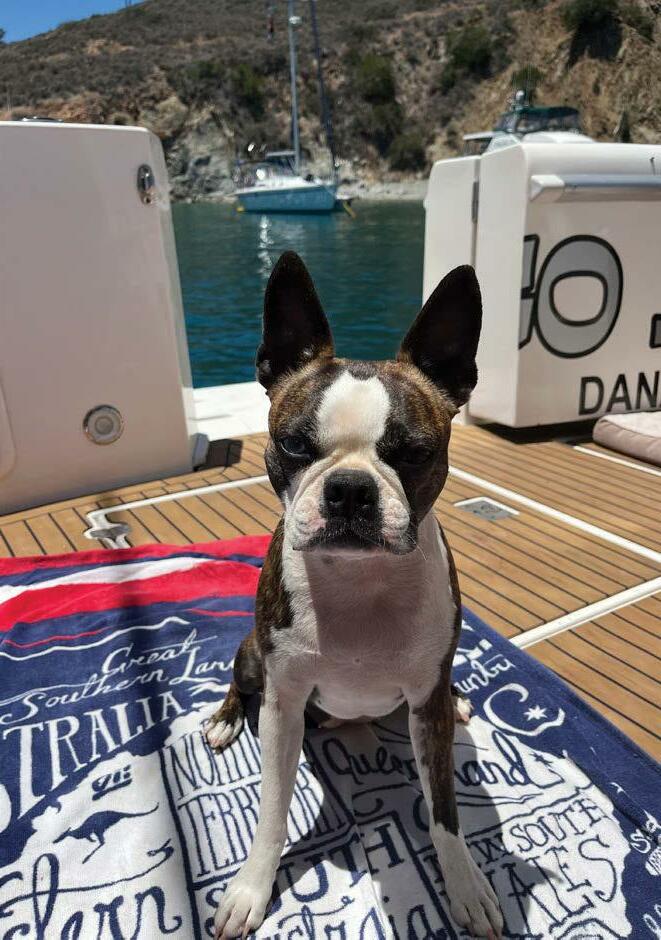
POSTMASTER: Send address changes to The Log, PO Box 1337, Newport Beach, CA 92659.
SUBSCRIPTION PRICE: One year, $39.00 by third class mail. Subscriptions are transferable but not refundable. Call us at (800) 887-1615. The Log is published every other Friday and distributed throughout Southern California.
miles per hour when it is within 200 feet of a dock with boats secured to it.


Unfortunately for our reader, law enforcement boats are exempt from section 655.2 and from any posted local sp eed limits if they are engaged in law enforcement activities and displaying their emergency lights. And, similar to a speed limit ashore, a speeding boat is only cited if the operator is actually caught speeding. Based on our reader’s question, it appears that none of these speeding boats have been cited for anything, so he is looking for a private remedy or a private cause of action in a lawsuit that will allow him to solve the problem without waiting for the authorities.
All boats are responsible for their own wakes, and the owner of property that has been damaged by a wake will in most cases have a legal claim against the owner and the operator of the offending boat. This is true even if the offending boat is a law enforcement boat, but the owner of the damaged boat will need to comply with a series of complicated procedural rules if he wants to bring a legal claim against a law enforcement agency. In any case, our reader may have a claim if he is able to determine the identity of the offending boat owner and operator, but identifying the culprit will not, by itself, solve his problem.
Ou r reader will also need to prove that the damage was caused by the wake and that it was not existing damage caused by something else. Failure to document or establish the pre-incident condition of the damaged boat does not preclude a claim for damage, but the
damage caused by the offending wake will nonetheless need to be established somehow. Eyewitness testimony, for example, could be used if a witness actually saw the impact or other cause of the da mage. Or, a recent pre-incident survey or inspection may be used to establish a baseline condition of the boat or dock.
The bottom line for our reader is that he has no private right to enforce a regulatory ordinance such as speed limit. Enforcement can only be performed by a sworn peace officer. But in general – yes – vessels are responsible for their wakes and damage caused by their wake, even where there are no regulations or restrictions concerning vessel speed limits. As such, our reader probably does have a civil claim against the owners and operators of the boats that have damaged his boat and dock, assuming he can identify them and prove that they caused the da mage. I am, of course, unable to offer more specific advice without knowing a lot more about the case.
David Weil is licensed to practice law in the state of California and as such, some of the information provided in this column may not be applicable in a jurisdiction outside of California. Please note also that no two legal situations are alike, and it is impossible to provide accurate legal advice without knowing all th e facts of a particular situation. Therefore, the information provided in this column should not be regarded as individual legal advice, and readers should no t act upon this information without seeking the opinion of an attorney in their home state.


Jimmy’s Famous American Tavern Open for Brunch Saturday & Sunday

Pier 32 Waterfront Grill Open for Brunch Friday, Saturday & Sunday


Point Loma Marina, 4980 N. Harbor Dr., San Diego, CA 92106 619.718.6260 / pointlomamarina.com Pier 32 Marina, 3201 Marina Way, National City, CA 91950 619.477.3232 / pier32marina.com


Police Department hosted this year’s event. More than 300 uniformed officers from 30 different local, state, and federal agencies volunteered their time to partner with students from select local schools.

The California Department of Fish and Wildlife (CDFW) will continue the temporary recreational crab trap restriction in Fishing Zones 3, 4, 5, and 6 due to the presence of humpback whales and the potential for entanglement from trap gear.


The recreational crab trap restriction for Fishing Zones 1 and 2 was lifted on Nov. 28. CDFW is reminding recreational crabbers that taking of Dungeness crab by other methods, including hoop nets and crab snares, is allowed during a temporary trap restriction.
The commercial Dungeness crab
fishery in Fishing Zones 3-6 will also remain delayed due to the high numbers of humpback whales present and the potential for entanglement with lines and traps in this fishery.
CDFW Director Charlton H. Bonham will re-evaluate the temporary recreational crab trap restriction and commercial fishery delay in Fishing Zones 3-6. That risk assessment informed of the potential for a commercial fishery opener and modification of the recreational trap restriction in Fishing Zones 3-6 on Dec. 16.
“We appreciate the discussions with the California Dungeness Crab Fishing Gear Working Group regarding risk of entanglement,” said Bonham in a press release from Dec. 8. “Ultimately, we must rely on the best available science and make management decisions based on the Risk Assessment Mitigation Program (RAMP) regulations. CDFW remains committed to providing fishing opportunity when risk of entanglement is low, which is consistent with our management approach since implementation of RAMP.”
In addition, Bonham has also slowed the northern California commercial Dungeness crab season due to poor crab meat quality test results for Mendocino, Humboldt, and Del Norte counties (Fishing Zones 1 and 2).
 By: KATHERINE M. CLEMENTS
By: KATHERINE M. CLEMENTS
In October of 2021, the California Sea Urchin Commission (CSUC) received a grant from the Pacific States Marine Fisheries Commission (PSMFC) in partnership with the National Oceanic Atmospheric Administration (NOAA) and the California Department of Fish and Wildlife (CDFW), after they issued a request for proposal for grants to fund projects that investigate ways to improve resiliency in California’s urchin fisheries and mitigate the effects of kelp loss. The marketing of sea urchins was listed in the criteria to be awarded funding.
The CSUC does not catch sea urchins nor sell them. Instead, they represent and promote the industry to the public and the government.
Da ve Colker, a California Sea Urchin Commissioner, applied for the grant and was awarded funding to increase the marketing of the sea urchin industry.
Colker focused on improving the traffic to the California Sea Urchin Commission website and updating the website with relevant industry information by hiring a website designer and a data analysis firm and chose to advertise in the Log

“The grant runs through June of 2024,


and I expect to see an increase in usage of our website and hopefully an increase of overall purchases of sea urchins from processors and divers, who sell directly to the public,” said Colker. “The website has an area dedicated to the promotion of divers who direct market their product and the processors.”
The PSMFC and NOAA also awarded other grants for projects to the CSUC that are now implemented, dealing with kelp restoration, reef rehabilitation, and exploring additional beneficial uses for Purple Sea Urchins.

A select group of professional underwater divers with permits from the state of California through the Department of Fish and Wildlife harvests California Sea Urchins. Sea Urchins are harvested primarily for the edible portion inside their shell, called uni. The uni is served at sushi bars and is well-known amongst sushi aficionados. Uni is graded by its taste, texture, and appearance. California uni is unique due to the water temperature and the food source for the sea urchin. As a result, California Sea Urchin is regarded as the world’s highest-quality sea urchin and is consumed worldwide. Major markets that purchase California Uni are Rome, New York, San Francisco, London, Tokyo, Los Angeles, San Diego, and many more.
The CSUC group of Urchin Divers was established in 2004 and operates under state law to ensure sustainable sea urchin resources and a reliable supply of quality seafood products for domestic consumption and export. The CSUC is funded by urchin divers through assessments on landings of sea urchins. The CSUC
The California Sea Urchin Commission uses grant funding to enhance sea urchin production through online marketing to bring awareness to the industry and improve resiliency.
Invasive species such as mussels can attach to boats and hinder performance and your boat’s life, end up in engine-cooling components, causing failure, and obstruct water lines causing system failure and costing the boat owner lot to repair. Here are tips, steps, and resources to help keep your boat and our waterways clean of destructive invasive species.
By: KATHERINE M. CLEMENTSBoats, trailers, waders, and other fishing and boat ing equipment can spread aquatic invasive species throughout bodies of water unless properly cleaned, dried, or disinfected after use. Boaters should practice these steps before launching their watercraft into public water bo dies. Although some invasive species, such as the Eurasian watermilfoil, are readily visible to the human eye, many others are too small to be easily seen. Take these steps to keep your boat and our waters clean of invasive species.
ax les, rollers, lights, transducers, license plates, and motor props for any plants, mud, or debris.
• Run your hand along the hull if your boat has been used in a waterbody known to have zebra mussels. If it feels like sandpaper, it likely has mussels attached.
• Also, inspect all gear used during your trip, including fishing gear and anchor lines.

2. Clean your boat. Clean any visible mud, plants, fish, or animals before hauling equipment.
• Toss materials in an upland area or invasive species disposal stations if installed at your boat launch site. Do not wash or release material into the water.
• Some invasive species, such as zebra mussels, can be challenging to remove from a boat hull. They must fir st be killed by water or steam at 140 F. Then they need to be removed by a brush or pressure washer. For help cleaning your boat and equip -

• Along the iconic Marina City Club tower condominiums and the Ritz Carlton, our renovated concrete docks are walking distance to dozens of restaurants.

• Slip fees include power, water, electronic access, a large storage dockbox, and access to renovated restrooms with showers. Features include free covered parking for boaters & guests, dock carts, laundry facilities, and a marketplace on site. Storage units for rent. Become a member of Marina City Club for pools, Jacuzzi, tennis courts, fitness center, and more.
• Liveaboard slips available, 35 foot and up. Short term guest slips upon availability.


Since its growth is typically dense, Eurasian watermilfoil beds are poor fish spawning areas, and excessive cover may lead to stunted fish populations. In addition, thick surface mats can interfere with boating, fishing, swimming, and other forms of water recreation.

ment, visit the CDFW website.

1. Inspect your boat. Check your boating and fishing equipment for invasive species.
• Carefully inspect standard attachment points such as trailer bunks,
• Dump unused bait in trash cans and bucket water on dry land, not in the water.
The Department of Energy anticipates its first hybrid-electric research vessel.
 By: KATHERINE M. CLEMENTS
By: KATHERINE M. CLEMENTS
The new R/V Resilience, a hybrid-electric research vessel, is expected to join the Pacific Northwest National Laboratory-Sequim (PNNL) fleet in April 2023. The vessel is being built by Seattle-based contractor Snow & Company, and Incat Crowther, located in Sydney, Australia, with offices in New Orleans, is a design partner.


The PNNL is a U.S. Department of Energy (DOE) national laboratory managed by the department’s Office of Science. The laboratory is home to several scientific user facilities and research facilities.
The R/V Resilience was created because the PNNL currently has a fleet of two boats and wanted to expand by adding a larger vessel with more capabilities.
The hybrid-electric propulsion system, a major R/V Resilience design feature, is being provided by Pacific Power Group from Kent, Washington. According to the DOE, the new plug-in hybrid research vessel will be the first of its kind in the agency’s fleet.
Federal officials said in a statement that the R/V Resilience represents «the next generation of blue economy technology and will enable future research and testing to support renewable power from the ocean. As a hybrid vessel, the investment will advance long-term opportunities for energy innovation and decarbonization of marine transportation.»
A unique structural feature of the Resilience is the all-aluminum construction catamaran hull. In addition to possible efficiency improvements, the multi-hull layout provides a bigger beam that translates to a science-accommodating working deck complete with a knuckle crane on an A-frame.
“A catamaran is efficient because the hulls have less wetted surface area for a given displacement, in addition to the benefit of two slender hulls having a superior length-to-beam ratio than a single, wider hull,” said Stewart Marler, marketing manager for Incat Crowther. “There’s an additional functional benefit for working platforms in that a greater beam can be achieved in a smaller vessel, creating more work space without the cost and weight of a larger vessel.”
The two hulls are also anticipated to have increased stability versus a mono-hull which is vital for an array of scientific processes like acoustic surveys.
In an interview with Pacific Maritime , Snow & Company Project Manager and Estimator Chris Watson said, “They are doing some energy stuff, wave power generation research. They also do marine environmental surveys, fisher-
ies, etc. This thing is multi-capable for them. It is a pickup truck. They can load whatever they want to and back in this thing.”
In addition, according to Snow & Company Vice President of Business Development Tim Kolb, when bidding for the project, the multihull design was part of the request from the DOE. Additionally, Kolb said that a catamaran has the proper hull for this type of research boat.
Onboard design features include:
• A dive operations platform.
• Onboard Scuba Bottle air compressor.
• A Garmin electronics suite.
• FLIR camera system.
• A set of stairs will lead from the work deck to the upper deck, and a flybridge with 360-degree visibility.
“They [Pacific Power Group] are what we would call the propulsion integrator,” said Kolb to Fishermen’s News. “They are the ones integrating all the electronic propulsion. The electric motors, the batteries, their diesel engines. They are providing all that to us.”
The R/V Resilience’s parallel hybrid-electric propulsion system design includes two main Volvo Penta D8-510 diesel engines, each capable of producing 374 kW of energy, supplemented by twin Danfoss Editron (an electronic manufacturer from Finland) 20kW EM-PMI375-T200-2600 electric motor generators.
According to the national laboratory, the onboard Spear Trident 113 kWh battery bank can be charged by its engines or shore power.
The R/V Resilience is designed to be able to cruise at 20 knots using diesel power while also being able to operate in an all-electric mode at sub-sixknot speeds. The goal for the lab is while working in a battery-electric mode, the vessel would be almost silent and emissions-free. In addition, the R/V Resilience should be less invasive when studying fish and other wildlife while also reducing pollution.
According to Watson, when there is acoustical work, they are not putting sound in the water, affecting whatever instrumentation they are trailing behind. So as a result, the vessel will be completely silent.
efficiently carry out their research.
Vibration caused by running engines can also upset sensitive scientific equipment. So, when departing from the dock, the crew will most likely be powering up
with the vessel’s diesel engines. Once they arrive at their work site, they will work on electric power.









AVALON — On Dec. 31, Love Catalina will present the 49th Annual New Year’s Eve Celebration at the Casino Ballroom from 6:45 p.m.- 1 a.m. Guests are invited to bring in the New Year with dancing at this optional black-tie event in the Casino Ballroom. Reservations include a gourmet buffet dinner with dessert, dancing to a live band, a glass of champagne to toast the New Year, party favors, and the classic midnight balloon drop. Musical entertainment will be provided by The Perfect Event’s Christien Anthony Band, featuring nine musicians, playing everything from big band music to contemporary and pop to appeal to guests of all ages, along with DJ Izzy. Reservations cost $199 and can be purchased online at https://www.lovecatalina.com/ events/holidays/nye/?action=registrationForm&eventid=46&sessionuuid=.


The required attire for gentlemen is

information or to book your reservation, please visit https://www.lovecatalina. com/events/holidays/new-years-eve/.









AVALON — On Jan. 1 at 7:30 a.m., the City of Avalon will host the Polar Bear Plunge & Swim along with the Catalina Swim Club at Casino Drive Park. Intermediate



to advanced swimmers will swim approximately one mile and then Polar Bear Plunge at 11 a.m. Guests can plunge or swim the pier. Hot chocolate and light refreshments will be served following the event. For more information, please contact the City of Avalon Recreation Department.
a coat and tie, black-tie optional. For ladies, evening cocktail wear to formal ball gowns. A coat check will be available throughout the event on the Mezzanine level. Dinner reservations for your table are accepted for 7, 7:30, 8, or 8:30 p.m. The buffet dinner will be available until approximately 9:30 p.m., and the band will perform until approximately 12:30 a.m. Menu items are subject to change and/or substitution without notice, and all gluten-free, vegetarian, and vegan menu items will be labeled. For more


The GEICO/BoatU.S. Marine Insurance claims files are full of incidents that likely could have been avoided by spending a little time upgrading … the skipper!
 BY CHARLES FORT
BY CHARLES FORT
Our decades of experience as a recreational boat insurer means that here at GEICO/BoatU.S. Marine Insurance, our in-house experts know that things like leaking thru-hulls and sloppy electrical work are what often lead to insurance claims. But we also see too many claims that could have been avoided by improving the skills of the operator. To see what we mean, try answering these quick quiz questions:
1. What is the safest thing to do for someone suspected of having hypothermia?
A. Give them a warm alcoholic beverage
B. Ma ssage the body to circulate blood
C. Get immediate medical attention
D. Apply hot towels to the head to thin the blood
2. How does alcohol use affect boat operators or passengers?
A. Physical reactions become slower
B De pth perception becomes sharper
C. Re asoning ability becomes quicker
D. Bal ance and sense of direction improve
3. Which of the following is considered a safe refueling practice?
A. Closing all hatches and doors while refueling
B. Tu rning your key on to operate the fuel gauge
C. Sen ding all passengers below while refueling
D. Using the hands-free clip to avoid spills
4. U.S. Coast Guard regulations require that a 14-foot powerboat carry which of the following items between sunset and sunrise?
A. Power horn and bell
B Garbage placards
C. Navigation lights
D. Navigation handbook
5. Which of the following is a requirement for life jackets?
A. They must be properly sized for the intended wearer
B. They must be stored safely in a watertight bag
C. Th ey must provide miles-per-
D. Th ey must be orange or other highly visible color
6. Which of the following is recommended when docking with wind and the current?
A. Whenever possible, approach t he dock with the wind and the current
B. Have your fenders and docklines ready before you approach the dock
C. Have crew positioned to physically fend off the dock
D. Prepare two docklines; any more than that will get tangled
Answers: 1:C, 2:A, 3:A, 4:C, 5:A, 6:B
How’d you do? Those were some simple sample questions asked in our BoatU.S. Foundation Safety Course, most based on real-life situations that resulted in real accidents found in our GEICO/ BoatU.S. Marine Insurance claim files. This winter, as you’re thinking of projects you want to check off your boat to-do list for next year, consider adding the following simple items to improve your skills. You’ll reduce your risk of accidents and become a better and safer boater.
Visit BoatUS.org/Free to take our free state-specific online safety course.
Last spring, an inexperienced boater took eight fishing buddies out in his ne w boat on Pamlico Sound. Unfortunately, the boat was only rated to carry six and, in what was described as fairly calm waters, the boat capsized, throwing the men in the water. Worse, there were only life jackets for four. The men survived by clinging to the upturned boat until rescued. If the water had been a little colder, the story could have had a tragic ending.
U.S. Coast Guard statistics show that in accidents that involve injuries or fatalities, the majority of operators had no formal boating education. By co ntrast, only 6% of fatalities involved operators who had taken a state-approved online boating safety course. Do the math and you’ll see why taking a course over winter (or any time of year) can make you a safer boater. Free online boating safety courses that meet requirements for most states are available from our BoatU.S. Foundation. Take it a step further and check out the Foundation’s other courses, including Weather for Bo aters, AIS for Boaters, Propane Systems on your Boat, and even Learn to Sail. In all, there are 14 more courses in addition to the state approved training. (BoatUS. org/Free)
Other organizations offering training include the U.S. Coast Guard Auxiliary, which includes courses for children, knot-tying, and more. America’s Boating Club offers classroom instruction on subjects such as piloting as well as engine maintenance and electrical-system courses. If you really want to dig deep into the systems on your boat, the American Boat & Yacht Council (ABYC) offers advanced courses like outboard and sterndrive corrosion and propeller selection and sizing.
Last time we looked at our top 10 insurance claims, collisions came in at No. 3. While many collisions are serious, such as a few high-profile ones in the 2019 season that ended in fatalities, most are low-
speed encounters with a dock or another boat while maneuvering, often caused by inexperience at the helm. Most of us took driver’s ed to learn to drive a car and hopefully not hit things in a parking lot, but there’s been no such thing for boaters. Until now. Here’s an easy way to get some hands-on training with experts in order to fine-tune your maneuvering skills. BoatU.S. offers on-water powerboat training courses at locations around the country. Courses include Intro to Boating (for both single-engine and twin-screw vessels), Women Making Waves (same as Intro to Boating, but for female students only), and Precision Docking and Boat Handling. Courses are typically three hours long and affordably priced around $149 per person. Boats and safety gear are included in the cost of all
courses. The Precision Docking and Boat Handling course covers 180-degree turnarounds, docking on both port and starboard sides, departing from a dock, and how to use the SCAN (Search, Concentrate, Analyze, and Negotiate) method to learn how to anticipate and avoid potential collision situations. Class sizes are limited to four students per vessel, ensuring students gets sufficient time at the he lm under the watchful eye of a U.S. Coast Guard-certified instructor. (BoatUS.org/On-Water)
A recent insurance claim came from the new owner of a 34-foot single-engine trawler who turned down a long, narrow fairway in an unfamiliar marina, looking for a transient slip. At the end, the skipper realized he was in the wrong part of the marina and needed to turn around. Never having done it before, he tried spinning the boat around with a flurry of wheel and too much throttle. Before he’d gotten out of the fairway, five boats had received varying amounts of damage.
If you can’t take a hands-on course, you can still visit our YouTube site for our (free) comprehensive library of more than 100 BoatU.S. videos on nearly every boating subject – including exactly how to ma ke a pivot turn in a marina. BoatU.S. videos are concise and educational, presented by our own experts – BoatU.S. editors and instructors who are knowledgeable, clear teachers.
If you’re like most of us, you’ve got dozens of boating books in your library. When was the last time you opened one? With the winter wind blowing, now is a good time to take one out and expand
From page 9
3. Drain all water.
Drain all water-holding containers, including ballast tanks, live wells, and bilge areas.
• Drain your boat before you leave an access site.
• Drain boat ballast tanks if your waterski or wakeboard has them.
• Drain your live well if you have one.
4. Dr y your boat.
Dr y boats, trailers, and all equipment before use in another waterbody. The most effective way to guarantee that you don’t transport invasive species or fish diseases to a new body of water is to dry your boating and fishing equipment completely.
• Drying times vary significantly depending on the type of equipment, air temperature, and relative humidity.
• While the outside of a boat will dry relatively quickly, bilge, live wells, and other parts of a boat not reached by the sun or lacking good air circulation will take longer to dry completely.
your knowledge. Chapman Piloting and Seamanship is one of the best reference books a boater can have, but until you read chapter six on anchoring, or chapter 11 on rough weather, this engrossing book is not helping you.
While the title might sound dry, the Amalgamated International and U.S. Inland Navigation Rules (commonly known as the “Rules of the Road” for boating) covers regulations and requirements for boaters, with topics such as sound signals, passing and overtaking other boats, and required safety equipment. (Pop quiz: Does two horn blasts from another boat mean they want to pass to starboard or port?) In fact, if your boat is more than 39 feet long, you’re required to have a copy of the rules onboard, something that a skipper cruising with his family last year in Puget Sound on their 45-foot sailboat learned after being boarded and fined for not having one (among other things). It’s a fantastic reference if you want to review such things as when to have a lookout (Rule 5), regulations for sailing vessels (Rule 12), and even the lights used when a boat is minesweeping (Rule 27). (Answer: Two short blasts means, “I intend to leave you on my starboard side.” Rule 34)
A couple of years ago, our BoatU.S. Consumer Affairs department received a call from a member wanting to know where to buy a manual for his new-tohim Mercruiser sterndrive. The reason?
The winter after he bought the boat, he winterized it the way he always had on his last boat, also a Mercruiser sterndrive. But the new engine had two additional drains that he overlooked, which caused the block to crack over the winter as the trapped water froze. That problem could have been avoided by reading the manual.
Most of us see the pile of manuals that come with our boats and gear, read the quick-start summaries, figure we’ll read
• A minimum of 5-7 days of drying time in dry, warm conditions is recommended.
5. Disinfect your boat.
Di sinfect a nything that comes into contact with water if it cannot be dried before reuse.
• Hot water is an effective disinfection agent for all aquatic invasive species and fish diseases. Soak all equipment in water at least 140 F for 30 seconds.
6. Visit your steward.
To help protect your waters, boat stewards are located at various boat launches throughout the state. Boat stewards assist visitors with a free boat inspection to look for invasive species and educate you on the importance of cleaning, draining, and drying your watercraft. They may also direct you to an on-site or nearby decontamination station. In addition, you may get your boat washed with high-pressure hot water at decon stations for free.
For more on invasive species, what they do, and how to clean and prevent them, visit playcleango.org. To find a California aquatic species vessel inspection st eward near you, please visit https:// dbw.parks.ca.gov/?page_id=29367.
the rest when we have time, and never give it another thought until something goes very expensively wrong and it’s too late. Well, winter is a great time to pull out the manuals for your engine, VHF, chartplotter, and more. Learn how to use all the useful features on your radio, radar, GPS, and other gear. At best, you’ll learn something that saves the day next season; at the least, you’ll make sure your boat and gear are serviced in accordance with manufacturer recommendations and remain under warranty.
While they might not save your life, knowing how to tie a few knots and hitches might save you a lot of grief. Every ye ar, GEICO/BoatU.S. Marine Insurance gets several claims for dinghies that went missing while being towed, for boats that were banged up by dock rash when a dockline came off, and for boats blown ashore when a mooring pendant let loose. What do these claims have in common? Incorrect or inadequate knot-tying.
Over the years , riggers and seamen devised hundreds of knots, bends, hitches, and splices, all for good reason. Because docklines as well as most of the sa il-control lines on sailboats are made of rope, you still need to master a few basic but versatile knots to take care of your crew and your boat. Making sure a dockline stays on the piling with the right hitch can help you sleep better at night. Being able to tie the right knot, bend, or hitch in the dark, quickly, can save your bacon time and again. This winter, practice the bowline, clove hitch, sheet bend, and reef knot – until you can do them at speed with your eyes closed.
If one of your guests falls and hits his or her head on your boat, would you know what to do? How about if one of your crew
From page 8
structure has board members that represent the divers and the processors. In addition, it handles various industry issues, of ten with government agencies, such as the CDFW, The Governor’s Office, and California State Representatives. CSUC is directed by a commission that includes five elected divers, five elected processors, and one appointed public member. The commission also has several non-voting members representing government entities that are significant to the sea urchin fishery.
CSUC proactively set forth guidelines and rules that ensure a sustainable fishery. Examples of measures and laws enacted to protect the fishery are size limits and closure days. In addition, CSUC allows a sea urchin to get to a 3 1/2” shell before harvesting and has a seasonal schedule to let sea urchins reproduce.
“California Sea Urchin Divers have to be first off, a California Commercial Fisherman, and possess a license to do so,” said Colker. “Second, they need to possess a California Sea Urchin Diving Permit. Sea Urchin Dive permits are issued by The California Department of Fish and
develops heat exhaustion? Or has chest pains? Unfortunately, these frightening situations often lead to a cascade of other problems that result in boat damage because people onboard become understandably panicked. Claims for damage (and sometimes liability claims for injuries that weren’t properly addressed) result. The more you know about how to treat someone who’s hurt, the less likely you are to show up in our claims files.
Dreaming of summer cruises doesn’t usually include fishhook-impaled fingers, sunburn, or sprained ankles, but we all know stuff happens on the water. Having a first-aid kit is great, but you need to know how to use what’s in it, and how to respond if there’s a medical emergency onboard. Having a course under your belt will take away much of the stress of an emergency as well as make it more likely your crew (or you) will quickly recover. The Red Cross offers first-aid and CPR courses around the country, and you can also find American Heart Association courses specifically for boaters that cover extras like carbon monoxide exposure, hypothermia, electric shock drowning (ESD) and seasickness.
Visit BoatUS.com/First-Aid-Kit to learn what items you should have in your boat’s first-aid kit.
Bio: Charles Fort is a former associate editor and head of consumer affairs at BoatU.S.
This article was reprinted with permission from BoatU.S. Magazine, flagship pu blication of the membership organization Boat Owners Association of The Un ited States (BoatU.S.). For more expert articles and videos to make your bo ating, sailing, or fishing better, visit BoatUS.com.
Wildlife.”
To get a sea urchin diving permit, an individual must be involved in the industry for a minimum of two seasons as a licensed commercial fisherman and have a c rewmember permit. Once the eligible individual is ready and accredited, they can enter “the lottery.” The lottery is held annually, and issuance is based on the number of divers with permits versus those who did not renew their permits. Also involved in the criteria for being an urchin diver is the willingness to work in the professional industry of commercial urchin diving. Commercial urchin diving is a laborious job, which combines understanding the laws of diving, the regulations of harvesting sea urchins, and having the physical attributes to accomplish the task. Many new sea urchin divers nowadays have worked as deckhands for years, and this allows them to have a better understanding and progress toward becoming a diver. In addition, there are many other jobs in the California Sea Urchin Industry worth noting, such as processing facilities that hire truck drivers, line workers, and administrative positions.
For more information, please visit w ww.calurchin.org.
HUNTINGTON BEACH — On Jan. 1 at 9 a.m., the City of Huntington Beach will begin celebrating the new year with a day of food, music, and a dip in the Pacific Ocean for the 23rd annual Surf City Splash and Pancake Breakfast. No wetsuits are allowed— that’s cheating. A pancake breakfast will be held from 9 -11:45 a.m., and the dip takes off at noon. In addition, a costume contest will be judged at 11 a.m., and vendors will line Main Street all day. At 1:30 p.m., the Opportunity Drawing and Auction winners will be announced. The auction tickets are $1 each or 15 for $10. In addition, there is a beach clean-up on Dec. 31 from 8 a.m.- 12 p.m., and if you participate in it, you get two tickets for the auction on Jan. 1. The event is located at the start of the pier at PCH and Main. The event will be supporting the Surfrider Foundation. For more information on the splash or the beach clean-up or to register, please visit https://www.thelocalhb.com/ surf-city-splash.

Sails are not cheap and do not last forever, but with proper care, cruising sails made of high-quality sailcloth will provide many years of service. Here are tips to help prolong the life of your sails.


The best way to maintain the strength and shape of your sails is to minimize the number of times they are left flapping. Flogging happens when the sailboat is pointed head to the wind in a strong breeze. Flogging rapidly degrades the cloth; therefore, make every effort to avoid it.



Believe it or not, direct sunlight is a sail’s worst enemy as it gradually breaks down the cloth. Therefore, ensure the UV strip is on the outside when rolled for furling headsails. In addition, keep a cover over your mainsail when it is not in use.
Chafing wears through sails. Check the ends and aft edges of spreaders and stanchion tops—tape up split pins, sharp halyard exits, and protruding screw heads. Check the front of the mast as tacking drags the foresail across it. Tacking is a sailing maneuver by which a sailing vessel, whose desired course is into the wind, turns its bow toward and through the wind so that the direction from which the wind blows changes from one side of the boat to the other, allowing progress in the desired direction.
Sails stretch and lose their shape if
you have too much canvas up for the prevailing conditions. On the other hand, being overpowered also leads to loss of control and will slow your boat down, so reef when you know you should. Reefing reduces the area of a sail, usually by folding or rolling one edge of the canvas on itself and attaching the unused portion to a spar, as the primary measure to preserve a sailing vessel’s stability in strong winds.
Guarantee these are correctly adjusted to stop fluttering in the main and headsail leeches. Fluttering will quickly tarnish the cloth and damage the stitching. Both main and headsails are likely to have leach lines, so use them.
The proper halyard tension takes the pressure off mainsail cars and sliders, protecting the stitching. It extends a genoa’s life and enhances pointing capability. Ease halyards, outhaul, and reefs after use.




Check batten pockets at both leech and luff ends to confirm the battens are secure and examine the stitching in these areas. It is essential to check the battens,
especially after an accidental gybe, as they can snap. Gybing is a sailing maneuver where the sails move from one side of the boat to the other.
Make sure your headsail foils are in good condition, with no burrs, and the foil sections are tightly bolted together and correctly aligned. This eliminates bolt rope tears and lets you hoist and lower the sail without damage.
Keep the mainsail track and cars clean and free of dust and grime to pro-
long their life. Lubricating with a dry lubricant, such as a silicone spray, will significantly reduce car friction and make the sail easier to hoist.
Flake the main differently every time to prevent permanent creases. Flaking is a single turn or several turns of rope in a coil, more popularly called a fake. Light creases will come out. Stow sails clean, salt-free, and dry, ready for next use. Make sure you dry the spinnaker before stowing, as darker colors bleed into lighter ones.

Ahoy Sailors, last time we talked about tips and tricks to decorate your boat and win you the grand prize in that boat parade. To stay on theme with sailing during the chilly months, this time, we will be discussing how to install a boiler for cold weather sailing. So stay tuned. Next time we will discuss something fun— New Year’s resolutions for boaters!
By: KATHERINE M. CLEMENTSUnless you plan on making a trip somewhere tropical, Southern California sailing is currently what we Southern Ca lifornians call “chilly.” With highs of 55 degrees and lows of 40, we need to find a way to stay warm, especially when we’re out on the boat. Therefore, a heating system is required to make your experience more comfortable while cruising in places where the mercury stays at the bottom of the thermometer.
Heat requires energy. This means natural gas or electricity on land, but neither is readily available at sea. As a result, most boats run off safe fuel in the form of diesel. Diesel is a safe and energy-rich fuel to burn for heat.
Heaters come in a few forms: a fireplace style that radiates heat passively, a direct air version that blows hot air, or a boiler (hydronic) that heats hot water
that transfers heat through radiators. The fireplace or hot air version works great for a smaller boat or a single cabin, but you’ll need a boiler to heat a larger boat.

With a boiler system, the boiler is typically installed in a lazaret or locker with a small expansion tank of water. Then it channels water to radiators strategically placed around the boat. Next, the water piping system is installed as a loop with a small pump. The pump moves hot water out to the radiators and returns it to the boiler to be reheated. The expansion tank adds the volume required to allow the water to expand as it heats and extra water volume to the system to store excess heat in the form of thermal mass.
Several manufacturers make these systems, most of them Canadian or European, likely due to the higher latitude sailing in those areas.
All successful projects start with a plan, and this one begins by planning the size of the boiler. Boiler sizing is essential: a unit that is too small won’t keep the boat warm and will prematurely wear out, but a boiler that is too large will cause short cycling and prematurely destroy it. Boilers are specified in BTUs delivered. You can approximate the BTUs required by calculating the interior volume of the boat (length x width x height) in cubic feet and multiplying by 12. This will give a rough calculation that you can adjust depending on the boat’s design. For instance, a deck saloon will require more BTUs than a low-slung cruiser.
Make space next to the boiler for the expansion tank. The expansion tank must be the highest point in the system to capture any air in the system. The exhaust should be routed as direct as possible. The shorter the passage, the better. Exhaust can be deadly, so plug all connections with a high-temperature sealant.
Ex haust systems on these units can
heat up to several hundred degrees, so they mu st be completely insulated and routed away from flammable materials. Try removing the exhaust line at an exhaust th rough-hull fitting designed to keep hot gasses away from the fiberglass.
The boiler is useless without fuel, so address that next. These systems sip fuel and are supplied with an easy-to-route 3/16-inch fuel line. The boiler should only use about a pint of fuel per hour. Like any diesel system, it’s important to bleed the air from the line. This is ea sy to perform by extracting the fuel line from the boiler and pumping fuel into a cup until all signs of air disappear.
The most challenging part of the installation is the piping and radiators. Depending on your boat’s design, we recommend designing the system with a small radiator in each cabin and a larger one in the main saloon. Try small radiators with 4-by-8-inch faces for the cabins and cut holes in lockers to mount them.
To maintain the water integrity of bulkheads and lockers, seal the cut surfaces of each hole with epoxy. While you route the hoses, try to avoid any high spots in the hose, as these are prone to collecting air and could impede flow. Any high points require a fitting to allow air to escape, each radiator has one, and they can be added if an elevated spot is inevitable.
The electrical parts of the system are relatively straightforward. The boiler must be powered with 12 volts of direct current. The main cabin requires a thermostat, and each radiator must be powered to drive its fan. It is important
to note that the boiler should be powered with constant power from a breaker. The power must be able to cycle independently of the system power switch so that when the system power switch is turned off, the boiler maintains power to complete its cool-down cycle.
Now that the system is installed, you must commission it. This means filling the system with water, flushing air, and looking for leaks. After that, you can add water to the system and run it cold or pump water through it with a utility pump.
With the commissioning process is complete, turn the system on. These systems go through a defined start-up sequence. First, you’ll hear the fuel pump ki ck in. Next, the boiler exhaust fan starts, and the boiler will light. The boilers are not silent, especially outside the boat— it begins with a whoosh and settles into a faint buzz. Finally, after maybe 15 minutes, the boiler will heat the coolant. Once the coolant is hot, the system turns on the radiator fans, and the heat flows.
Now get out on the water and enjoy some warm cruising.
MARINA DEL REY— On Jan. 7, the Del Rey Yacht Club will host the first of five races for the 2023 Berger Series & Stein Series. The race will travel up to Malibu and back down to MDR. The William Berger & William Stein Series is one
of the most looked forward to series in all of Southern California. Malibu and Return is the first race in this five-race series. The Berger course is for PHRF boats and is 22nm (with a shorter course option if the wind is unusually light). The Stein course is for Cruiser Class boats and is 15nm up to Topanga Beach and return. The DRYC is inviting PHRF boats to compete in the 2023 William Berger Series and Cruiser boats to compete in the William Stein Series races. These five races represent the best-attended and most challenging random leg series in Santa Monica Bay. In addition, Berger Races 1 and 2 are part of ASMBYC’s High Point Series. The event is governed by the rules defined in the Racing Rules of Sailing and PHRF of Southern California (SoCal PHRF). Class Rules are available at phrfsocal. org. Boats will compete in either the Berger/PHRF division or in the Stein/
Cruiser division. The entry fee is a function of boat length and payable at the time of entry:
Boat Length Races 1, 2, & 3 for each race Races 4 & 5 both races
< 30ft $35 $80
30 to 40 ft $45 $100
to 50 ft $55 $120
>50 ft $65 $140
For more information or to see the Notice of Race, please visit https://www. regattanetwork.com/event/25503.
DANA POINT— On Jan. 7, the Dana Point Yacht Club will host the Frosty Deck Regatta. The event is governed by
the rules as defined in The Racing Rules of Sailing and is open to boats in PHRF Spinnaker and Non-Spinnaker classes. PHRF class entries must have a valid current PHRF rating certificate. OneDesign classes may be established with five or more entries. The Early Entry Fee is $30 for registrations completed no later than Dec. 31. The Entry Fee is $40 for any entry received after Dec. 31 and before the entry deadline— the deadline is 6 p.m. on Jan. 6. There will be a competitor meeting on Jan. 7 at 9:30 a.m. The first warning signal will go off at 11:55 a.m. A Kickoff 2023 celebration will be held after the race for racers and guests at the DPYC. Take home trophies will be awarded following the race at the DPYC as well. To view the Notice of Race or for more information, please visit https://www.regattanetwork.com/ event/25524.
“Our 2023 halibut derby is only a few weeks away from kicking off! Derby runs from Jan 1 to May 31 2023. Drift specific trips as well as a daily buy in on open party trips will be part of the derby again! We’ve got epic sponsors again this year too. More details to come but we’re anxious and ready! #danawharf @danapointharbor.”
DANA POINT— From Jan. 1 through May 31, Dana Wharf will host the 15th Annual Halibut Derby, a five-month-long derby where anglers compete to catch the biggest halibut. Peggy Stein currently holds the record at 43.10 lbs.


“For 2023, we have added some new features,” said Dana Wharf Sportfishing & Whale Watching COO Donna Kalez in an email from Dec. 14. “We are starting at 6 a.m. this year instead of 7 a.m.entering is easy. Jump on any local fishing trip and pay an entry fee of $5.00, or Da na Wharf has specific trips that only drift for Halibut and are offered Friday and/or Sunday.”
Join a Halibut Drift Day Trip on Fridays or Sundays from 6 a.m.- 3 p.m. This is a specific halibut drift trip that solely targets halibut; the last day for this option is May 28. You also have the option to join any open party local half or threequarters-day trip and pay a $5 entry fee. The top angler at the end of the derby will win $2000.
Anglers that catch the 25 largest halibut will win a spot to compete in the Free Fish Off on June 4th. The top angler and the end of the Free Fish Off will win $1000. If no legal halibut is caught, then that prize money will be divided by the number of anglers onboard.

Ea ch month of the derby, the angler who catches the largest halibut by weight will be awarded prizes totaling $1000, including a $100 Dana Wharf gift card, a Da iwa rod/reel combo, and other prizes
Drift specific trips as well as a daily buy in on
from Hogan’s Bait & Tackle, Fishworks, BD Outdoors, Costa sunglasses, and a $100 Wind & Sea restaurant gift card (no angler can win this more than once).
Tickets cost $91, and a portion of every
Whoever
entry will go to Coastal Conservation Association which protects the right to fish.
“D ana Wharf has given away over $100,000 in cash and prizes during the past 15 years; all you have to do is catch
$2000.
a legal Halibut. Everyone has the same chance,” said Kalez.
To purchase your ticket, please visit ht tps://danawharf.com/ fishing-trips/halibut-derby/.

Congrats on catching a giant fish, but that doesn’t mean your fish-handling techniques should be compromised. Here are nine recommendations to help you respectfully handle your big fish.

1. Don’t lift the fish solely by its mouth.
When lifting a fish, gently raise it horizontally with two hands. The goal is to give support along the entire length of the fish to relieve any excessive pressure being applied to different parts of the fish. Even if it’s a species often held by the mouth, like striped bass, it’s important not to hold a big fish just by the mouth. A fish is too heavy to be held up by the mouth when it reaches a large size. The weight of its own body can actually rip and tear at its jaw.
1. If the species is not allowed out of the water by law, don’t take it out.
Depending on their size, certain species cannot be taken out of the water. For example, in the United States, tarpon larger than 40 inches cannot be taken out of the water. Once they’ve reached this size, their bodies have so much mass that they need to be kept in the water to support that weight. While this rule may not apply in other countries where tarpon and other species exist, the physics and the ethics behind proper handling still apply.

This should apply to every fish you catch, no matter the size. Of course, some fish species are more delicate than others, but wetting your hands before handling them is always a good and considerate action.
Many anglers reach for the gills to grab ahold of larger fish. Even though the gills provide a handhold for lifting larger fish, it is one of the deadliest places to hold a fish. If you are practicing catch and release, positioning your hands and fingers in the gills is one of the most harmful things you can do and will increase the likelihood of killing the fish.
4.
This may seem like common sense, but believe it or not, some anglers will resort to holding a fish by its eyes. It should be self-explanatory that this is not a proper way to hold a fish.

5.
Larger fish will put up tougher fights, but it’s the angler’s responsibility to limit the fight time as much as possible. Since the survival rate of the fish drops as fight time grows, anglers should attempt to get the fish to hand as quickly as possible without breaking the line. If you are practicing catch and release, you should use gear that helps to minimize the fight time.
6.
Depending on the fishery, there are several ways that anglers will catch big fish. This can be performed by hand, with a net, or with a gaff. If it is a catch-andrelease circumstance, the angler won’t be landing the fish with a gaff. When using a net, make sure the net is made of rubber rather than nylon. Rubber netting is less harmful to fish.
Never lay a fish on dry ground—it’s disrespectful to the fish. Anglers should minimize handling time outside the water and keep the fish wet at all times. One way to help keep the fish wet is to use a rubber net. It provides a safe place for the fish to stay in the water while the angler unhooks the fish, prepares fish tagging materials, or does other tasks before releasing the fish.
When releasing large fish back into the water, it is important to revive them before releasing them. That fish just had to endure the stress of the fight, then had to be put through the stress of you unhooking it, then perhaps a photo session out of the water. All these stressful conditions collect and can lead to the fish dying after being released. Rather than just flinging the fish back into the water, take the time to carefully set it in the water and revive it before allowing it to swim away. When you revive a fish, make sure you hold it upright and in a gentle flow of water so it can get its gills working and recover oxygen from the water. In still water, hold the fish gently and watch it pump water through its gills, providing much-needed oxygen to the fish.



• The 2022 middle to late December Southern California offshore fishing picture is not what it was during the middle of summer, but we are now not far from the end of 2022 and we continue to be blessed and still have good numbers of bluefin tuna and a few swordfish biting in local offshore waters. With an absence of strong northern weather systems in the current 10 day forecast, there is reason to think that the 2022 offshore fishing season might just roll right into the New Year of 2023.
• The best bluefin fishing has been out at the Tanner Bank where boats have been anchoring and drifting in the region of the high spot and finding near limit-to-limit fishing for bluefin tuna. The bluefin at the Tanner Bank have been mostly 18 to 40 pound fish but recent catches have seen a better grade of bluefin enter the picture with fish to 65 pounds currently in the mix.
• Bluefin have been biting both day and night with sardines, live squid, Flat Fall jigs and knife jigs being





productive. Live squid has been the best of those baits in recent days and squid have been able to be jigged for bait at night by boats anchored around the Tanner Bank. Even though there has been live squid jigged at night at the Tanner Bank, I suggest getting squid wherever you first find it available if you can find it for sale at a mainland bait receiver or from a squid boat at Catalina or elsewhere.
• The bluefin bite has been a steady pick type of a bite that is supplemented by flurries of better numbers of biting fish. As an example of the fishing, Tribute out of Seaforth Sportfishing was out on a recent 1.5 day trip that had 28 anglers catch their limits of 56 bluefin tuna along with 40 rockfish, 4 lingcod and 71 whitefish.
• 22nd Street Landing had 3 boats out fishing bluefin last weekend. Amigo had a 2 day trip with 8 anglers catch their limits of 32 bluefin tuna along with 2 lingcod and 160 rockfish. Freedom had 35 anglers on a 1.5 day trip catch 56 bluefin tuna and 213 rockfish. Pride was out on

a 1.5 day trip that saw 13 anglers catch their limits of 36 bluefin tuna along with 130 rockfish.


• The Tanner Bank has been the best for bluefin and there have also been reports of some bluefin biting around the Cortes Bank. In Mexican waters, there have also been a couple of unconfirmed reports about bluefin being caught around some of the offshore banks outside of Ensenada.
• The other offshore fishing going on in this middle to late December time period has been deep drop fishing for swordfish. The 9 Mile Bank and 178 Spot areas have been a couple of the better deep drop swordfish areas in recent weeks but boats fishing those areas and fishing the nearby La Jolla Canyon during the past week have been reporting slow fishing. The swordfish bite at the 9 Mile Bank, 178 Spot and La Jolla Canyon sectors slowed when the water temperature dropped down into the 59 to 60 degree range.
• An interesting thing is that while the recent deep drop swordfish bite has been on the decline in the San Diego region, there is still an occasional swordfish being caught by boats that have been deep drop fishing in the Catalina region. The deep drop fishing in the Catalina region has been produc-


ing occasional bites while fishing in the region of the 152 Spot, Avalon Bank and the area 3.5 to 8 miles off Newport Beach. The information I have is of 2 deep drop swordfish being caught in the Catalina region during the past week or so.
Full story will be found online. Bob Vanian is the voice, writer, and researcher of the San Diego-based internet fish report service called 976-Bite which can be found at www.976bite. com. Vanian also provides anglers with a personal fish report service over the telephone at (619) 226-8218. He always welcomes your fish reports at that same phone number or at bob976bite@aol. com.


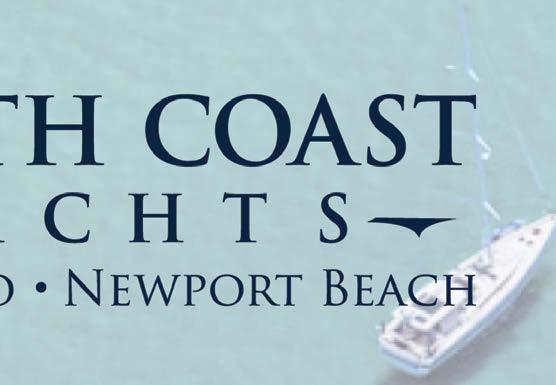






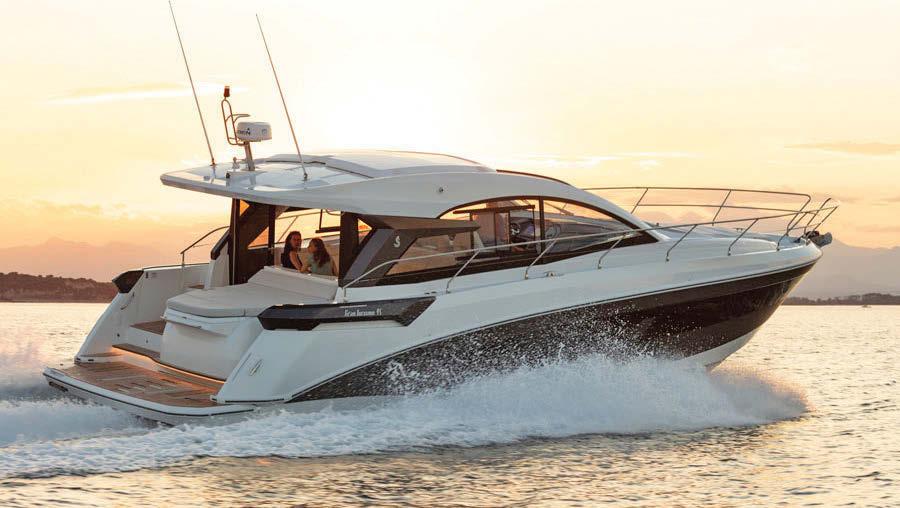



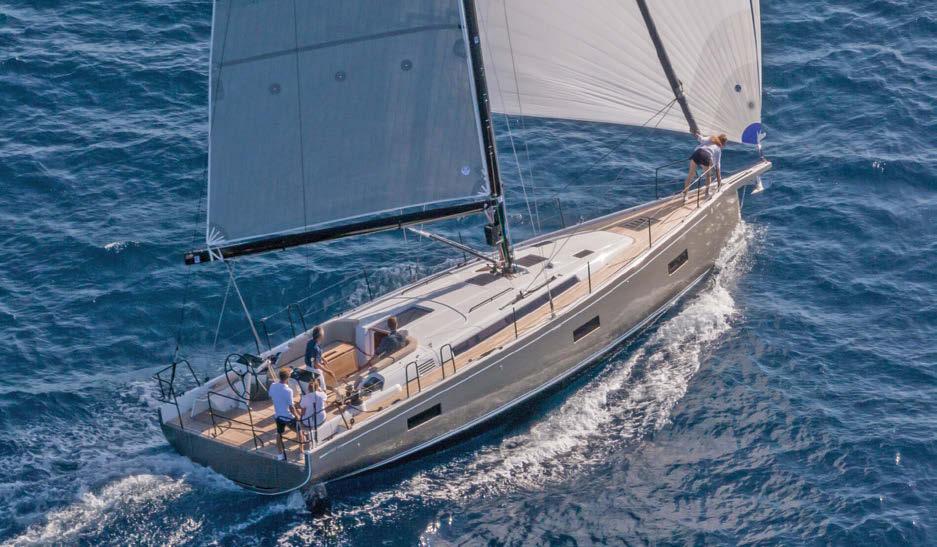








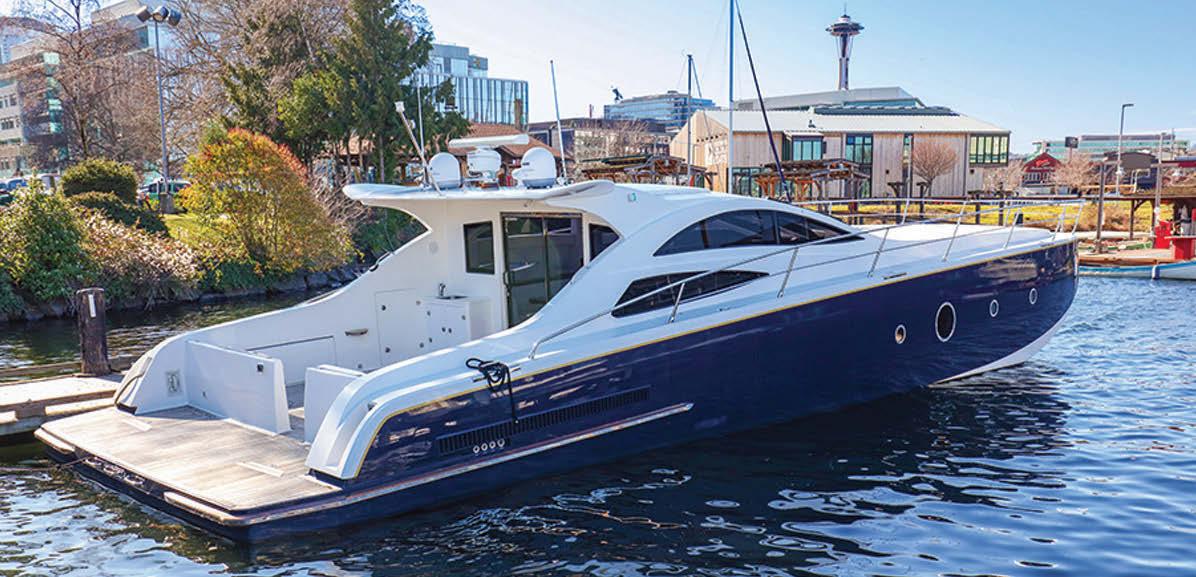


































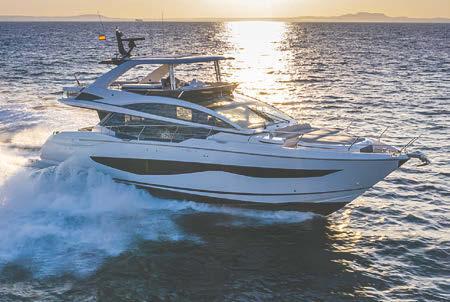
85’ (25.91m) :: Azimut :: 2000 / 2014 $1,100,000 :: +1 310 503 0844 rolf.smith@northropandjohnson.com


85’ (25.91m) :: Yachting Developments :: 2002 $1,200,000 :: +1 714 322 1667 tom.corkett@northropandjohnson.com
83’ (25.3m) :: Inace :: 2002 / 2019 $2,900,000 :: +1 619 228 1942 paul.daubner@northropandjohnson.com

82’ (24.99m) :: Hatteras :: 1995 $1,195,000 :: +1 949 887 8927 jim.elliott@northropandjohnson.com







72’ (21.95m) :: Elliott :: 1983 / 1996 $1,250,000 :: +1 949 610 5812 robert.petrina@northropandjohnson.com
70’ (21.34m) :: Hatteras :: 1996 $849,000 :: +1 858 740 1987 graham.rutherford@northropandjohnson.com
58’ (17.68m) :: Tayana :: 2006 $519,000 :: +1 352 442 6517 jaco.stofberg@northropandjohnson.com
















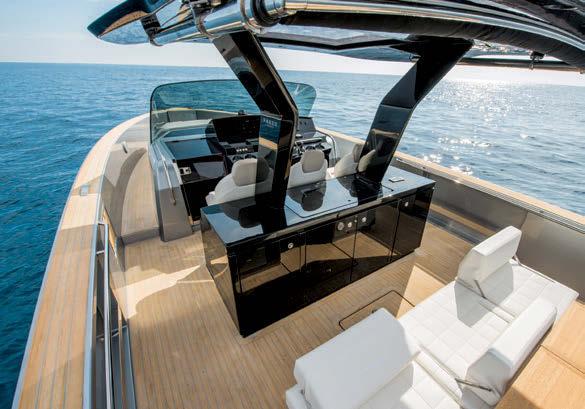
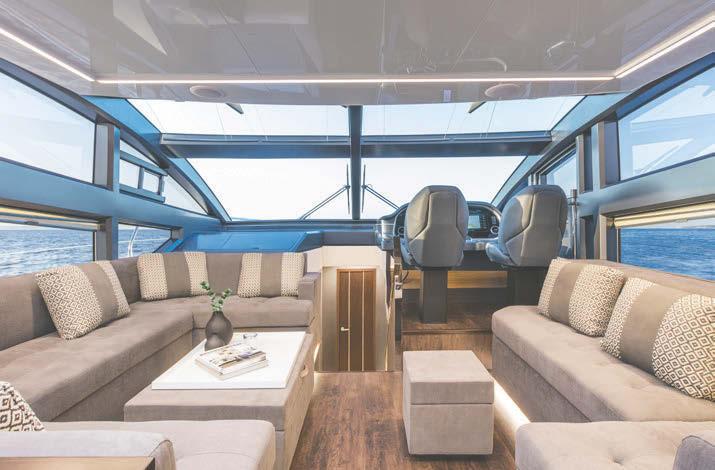











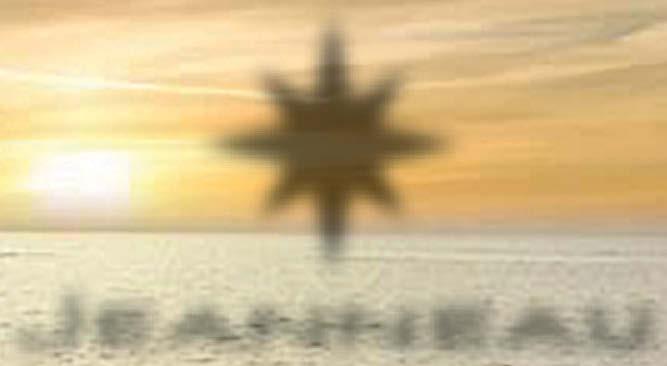








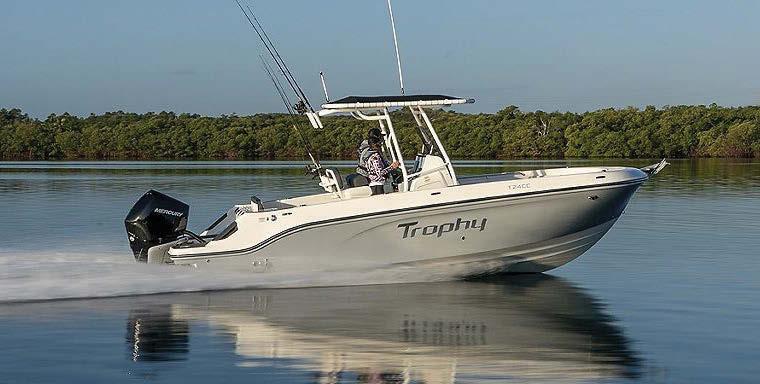

San Diego, CA Newport Beach, CA Long Beach, CA
YACHT SALES | YACHT CHARTER | YACHT MANAGEMENT
Denison has long been a leader in the yachting industry, becoming an American powerhouse leading with the highest volume of superyacht sales globally for the past three consecutive years. Providing complete yachting services, from sales and charter to insurance and maintenance, Denison is the best resource with which to list your boat. Marina del Rey, CA San Francisco, CA Seattle, WA
619.822.2715 949.791.4220 562.594.9716
310.821.5883 510.981.2021 206.686.5400
DenisonYachting.com























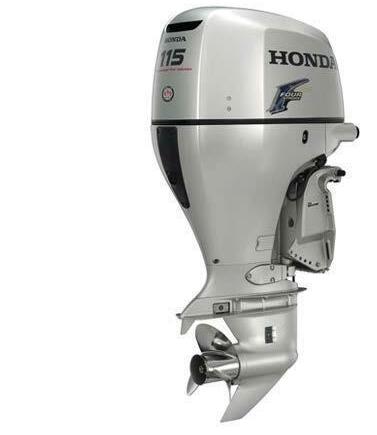


































































































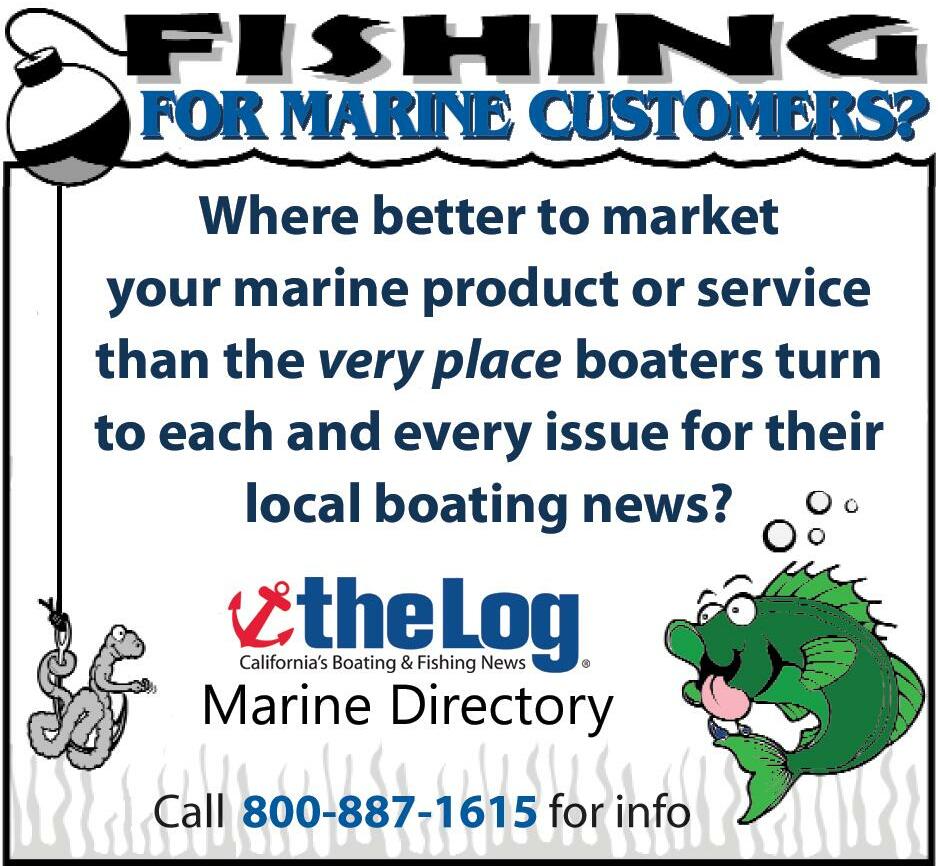













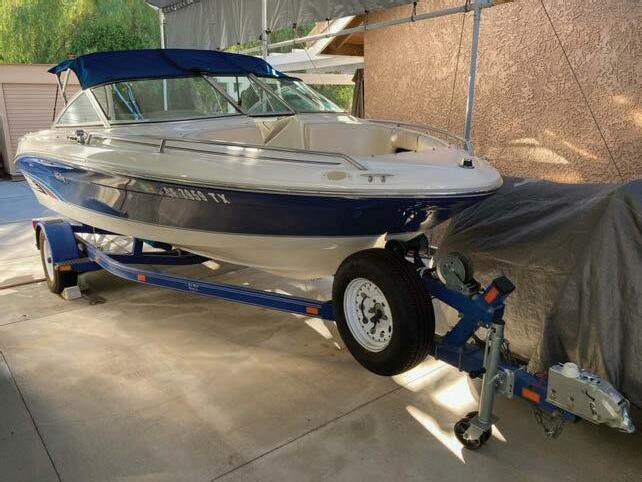
















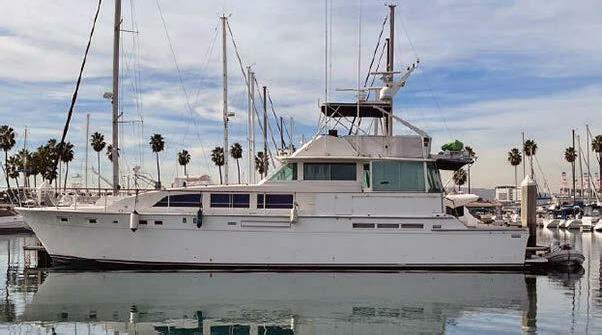
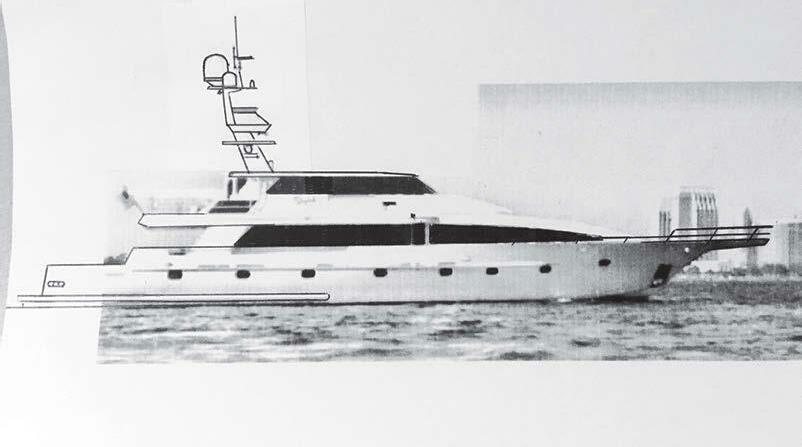












TOPLACEANAD,Call800-887-1615,oronlineat thelogclassifieds.com




HIRINGNOW!
40’BALBOAISLANDSLIP: Private.Available year-round.Forlease.Negotiable.Forinfo,call 949-673-0864,oremail tomnnewport@gmail.comarina.com
BRANDNEWMARINA: Slips25’-75’.Private, quietharbor,closetothebeach,shopping, restaurants,parking,&more.Call714-840-5545 oremail info@huntingtonharbourmarina.com (310) 521-0200 drystorage@cabrillowaydrystorage.com
PIER32MARINA,SANDIEGOBAY: Callfor slipavailability619-477-3232oremail office@pier32marina.com

POINTLOMAMARINA-SANDIEGO: Callfor slipavailability.Call619-718-6260oremail office@pointlomamarina.com
PUTYOURSAILBOATINTOCHARTER in DanaPointHarborwithAventuraSailing Association.Haveyourboatmakemoneywhen youaren’tusingit!Slipsavailable.949-493-9493, membershipservices@aventurasailing.com
SANDIEGOMOORINGCOMPANY: Visitour websiteforinformation&applicationwww.sandiegomooring.com orcall619-291-0916.

WANTEDMOORINGATTHEBYCMOORING FIELD: PleasecontactJoeat626-343-2823, celldirect.Willingtopurchaseandclosethe samedayThankyou.
ISLANDYACHTANCHORAGE: LOS ANGELESHARBOR.25’-50’SLIPS AVAILABLE.SOMELIVEABOARD.CALL 310-830-1111.

LIGHTHOUSEYACHTMARINA: 1ST&2ND MONTH1/2OFF(WithThisAd),34’END-TIE FORCATORTRI+25’TO50’SLIPS.L.A. HARBOR.Water/electricity/dockboxincluded. Showers,laundry,parioarea.Gated,clean& quiet,lockers.Closeportto...Catalina.Berth 205-B,1300AnchorageRd,Wilmington.Call Barbara:310-834-9595.

www.lighthouseyachtmarina.com.Email barbgmarina@gmail.com




LONGBEACHSLIPS&END-TIES25’-50’: NO LIVEABOARDS.HarborLightLandingMarina, viewsofdowntownandQueenMary.Call 619-807-7245.Email: lance@harboryc.com

MARINACORTEZ-SANDIEGO: Stunning location,improvedamenities.10’-120’slips, endties,andsideties.30’SlipsavailableNOW. Call619-291-5985.
BOATCAPTAIN&DISPATCHERNEEDED: SanPedro.USWaterTaxi.Wearelookingfora BoatCaptain.Musthave100-TonMaster (required).Formoreinformationcall310-5198230oremail jflores@watertaxius.com

COMPLETESET ofinteriorcabincushionsfor 2005-2012Beneteau46sailboat.Off-white fabric.Goodcondition.Nostainsorholes.$200. 760-791-9101

ICOMMODELIC-M36 handheldVHF Transceiver.Newinbox,neverused.Withall accessories.Neveronboard,storedingarage. $125.714-392-2648
6KWNORTHERNLIGHTSGENERATOR: Goodcondition.2006model.Runningnowin theboat.$4,200.CallChuck:760-518-5148
IBUYUSEDMARINEELECTRONICS: Text photosorcall619-962-6969.Email rickabristol@gmail.com
USCGLICENSEDMASTERCAPTAIN
**USCGCERTIFIEDMASTER**
offersPrivateMotorBoatOperation InstructionandSafetyTrainingaboard yourvessel.Callforpricinginformation: 951-642-2489,oremail billy.ellis@att.net

WANTEDTOBUY: Powerboats1986and newer,runningornot,upto34’inlength.We willhelpwithremovalfromyourslip.CallAlfor moreinfo:800-613-5410.
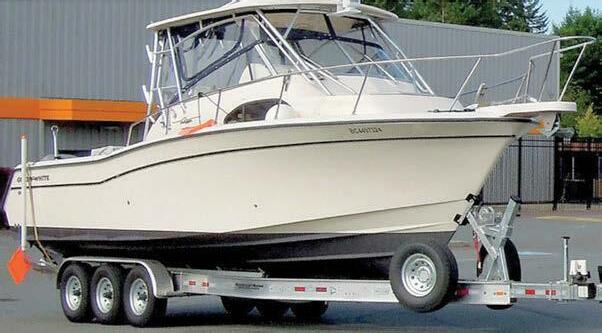

DELIVERIES,INSTRUCTION, andallother professionalCaptainservices.Sail,power. www.KeithEricson.com,619-275-3839,San




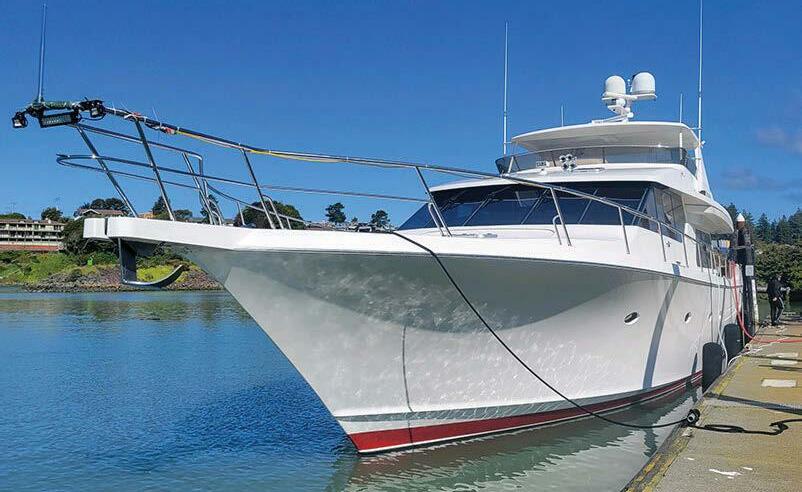


TOPLACEANAD,Call800-887-1615,oronlineat thelogclassifieds.com



The team at Hawthorne Marine Power has a unique understanding of the wants and needs of the recreational boating owner and the engineering crews who run them. From marine engines to gen sets, power solutions and Genuine Cat® parts, Hawthorne Marine power provides a one-stop solution to keep you up and running. Plus, were backed by the global network of 500 Cat dealers, so anywhere the sea takes you, we have you covered.











